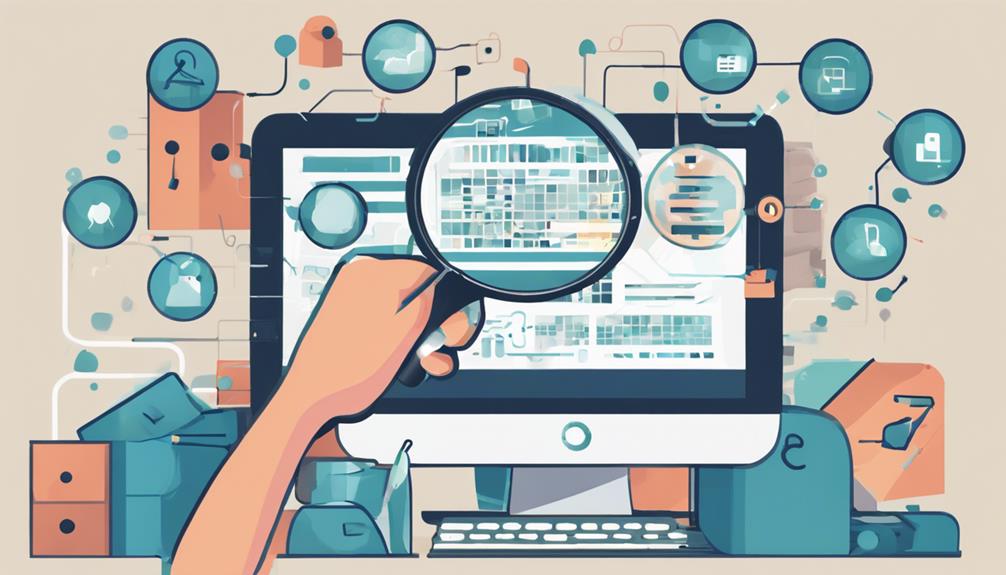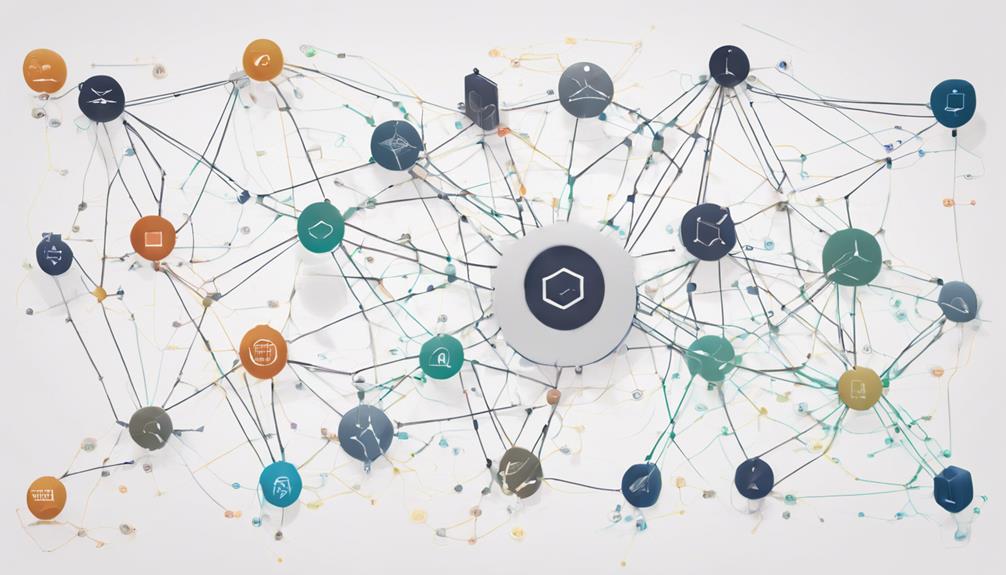To ensure B2B data consistency, you must understand the key strategies that can help you navigate the complexities of maintaining accurate and reliable data in your business processes. By implementing effective data management techniques and utilizing advanced tools, you can streamline your data consistency efforts and enhance the overall quality of your business data. Stay tuned to discover practical tips and insights on how to tackle data consistency challenges and optimize your B2B data management practices for improved operational efficiency and informed decision-making.
Understand Data Consistency Importance
Understanding the importance of data consistency is crucial for any B2B organization. Data quality is the foundation on which decisions are made, strategies are formulated, and relationships are built. Ensuring that your data is accurate, reliable, and up-to-date is essential for maintaining operational efficiency and gaining a competitive edge in the market. By focusing on data quality, you can prevent errors that may arise from inconsistencies, duplicates, or outdated information.
Error prevention is a key aspect of maintaining data consistency. By implementing robust data validation processes, conducting regular audits, and establishing clear data entry guidelines, you can minimize the risk of inaccuracies creeping into your database. Consistent data leads to better insights, improved decision-making, and enhanced customer experiences. It also helps in building trust with partners and stakeholders, as they rely on the accuracy of the information you provide. Therefore, prioritizing data quality and error prevention is paramount for the success of your B2B organization.
Set Data Consistency Goals
To establish a solid foundation for data consistency within your B2B organization, setting clear and actionable data consistency goals is imperative. Start by defining specific objectives related to data quality and data integrity. Data quality goals may include ensuring accurate, complete, and up-to-date information across all systems and processes. This involves regular data cleansing, validation, and enrichment activities to maintain high standards of quality.
In parallel, data integrity goals should focus on maintaining the consistency and accuracy of data throughout its lifecycle. This includes implementing robust data governance practices, defining data ownership responsibilities, and establishing data validation rules to prevent errors and discrepancies. By setting measurable goals for data quality and integrity, you provide a roadmap for your organization to follow and continuously improve its data management practices.
Develop a Data Consistency Plan
To ensure B2B data consistency, you must develop a comprehensive plan that addresses key components such as data organization, consistent data entry practices, and regular data audits. By outlining a clear strategy for managing data, you can establish a framework that promotes accuracy and reliability across your organization. Implementing measures to maintain consistent data entry and conducting routine audits will help uphold the integrity of your data and optimize operational efficiency.
Plan for Data
When it comes to ensuring B2B data consistency, one crucial aspect is to develop a solid Data Consistency Plan. This plan should encompass elements of data governance and data quality to guarantee that your business information remains accurate and reliable. Data governance involves establishing processes and rules for managing data throughout its lifecycle, ensuring that there are clear guidelines on how data is collected, stored, and utilized within your organization.
To achieve data consistency, it is vital to focus on data quality. This entails implementing measures to maintain the accuracy, completeness, and reliability of your data. By regularly monitoring and cleansing your datasets, you can identify and rectify any inconsistencies or errors promptly. Additionally, setting up data validation checks and audits can help uphold the quality of your information over time.
Developing a comprehensive Data Consistency Plan that integrates data governance and data quality practices will serve as a robust foundation for maintaining consistent and reliable B2B data within your organization.
Consistent Data Entry
Developing a streamlined and efficient process for consistent data entry is fundamental in ensuring the integrity of your B2B data. Data quality hinges on accurate and error-free information input, making error prevention a top priority. Start by establishing clear guidelines and standards for data entry within your organization. This includes defining data fields, formats, and validation rules to maintain consistency across all entries. Implement automated data validation tools to catch discrepancies and enforce data integrity.
Training your team on the importance of accurate data entry and providing regular refresher sessions can help reduce human errors. Encourage a culture of double-checking entries before finalizing them to mitigate mistakes. Utilize data entry templates and forms to guide users in inputting information correctly. Regularly review and update these templates to adapt to changing data requirements and prevent inconsistencies.
Regular Data Audits
Establishing a robust data consistency plan through regular data audits is imperative for maintaining the accuracy and reliability of your B2B data. Conducting regular data audits allows you to assess the overall data quality and identify any discrepancies or errors that may impact data accuracy. By systematically reviewing your data on a consistent basis, you can proactively address any inconsistencies and ensure that your B2B data remains reliable for making informed business decisions.
During data audits, focus on verifying the correctness and completeness of the information stored in your databases. Check for duplicate entries, outdated records, and any missing data points that could compromise the overall data quality. Additionally, validate the accuracy of key data fields to guarantee that your information is up-to-date and relevant for use in various business processes.
Implement Data Consistency Techniques
To ensure B2B data consistency, you need to focus on implementing key techniques such as data validation, standardization, and cleansing. Data validation techniques help in verifying the accuracy and integrity of the data, ensuring it meets specific criteria. Standardization methods aid in harmonizing data formats and structures, while data cleansing processes eliminate inconsistencies and errors within the data.
Data Validation Techniques
To ensure that your B2B data remains consistent and reliable, it is paramount to implement data validation techniques effectively. Data validation plays a crucial role in maintaining the accuracy and integrity of your data. Here are three key techniques to consider:
- Automated validation: Utilize automated tools and software to perform real-time validation checks on incoming data. These tools can help identify errors, inconsistencies, and duplicates swiftly, ensuring that only valid data enters your system.
- Manual checks: While automated validation is efficient, manual checks are equally important. Designate trained staff to review data for any anomalies that automated systems might miss. Human oversight can catch nuances that automated processes might overlook, enhancing the overall data quality.
- Cross-referencing data: Implement cross-referencing techniques to verify the accuracy of data across different sources or databases. By comparing data points against each other, you can identify discrepancies and ensure that the information aligns correctly.
Data Standardization Methods
Moving forward from the discussion on data validation techniques, a critical aspect of maintaining data consistency in B2B environments is the implementation of data standardization methods. Data normalization techniques play a crucial role in standardizing B2B data by organizing information into a uniform format, ensuring that data is consistent and easily comparable across different sources. By applying data normalization techniques, such as removing redundancies and inconsistencies, businesses can enhance the accuracy and reliability of their data.
Automated data deduplication is another essential method for achieving data consistency in B2B settings. This process involves identifying and eliminating duplicate records within a dataset, preventing data redundancy and ensuring that only unique and relevant information is retained. Implementing automated data deduplication tools streamlines data management processes, reduces errors, and improves overall data quality.
Data Cleansing Processes
Utilizing effective data cleansing processes is vital for ensuring data consistency within B2B environments. When it comes to maintaining data accuracy and eliminating duplicates, there are key techniques that can significantly enhance the quality of your B2B data:
- Data Accuracy Checks: Implement thorough processes to validate the accuracy of your data. This includes verifying information against reliable sources, performing regular audits, and correcting any inconsistencies found in the data.
- Duplicate Detection Tools: Utilize advanced software solutions designed to identify and eliminate duplicate records within your database. These tools can help streamline data deduplication processes and prevent redundant information from causing data discrepancies.
- Normalization Procedures: Establish standardized formats for data entry to ensure uniformity across all records. Normalizing data fields such as addresses, phone numbers, and product names can enhance data consistency and make it easier to search, analyze, and utilize the information effectively.
Use Data Consistency Tools
Data consistency tools are essential for maintaining accurate and reliable B2B data. These tools play a crucial role in ensuring that your data is free from errors and inconsistencies. By utilizing data verification and consistency checks, you can identify discrepancies, duplicates, and missing information within your database.
Data verification tools help in validating the accuracy and completeness of the data by cross-referencing it with external sources or predefined rules. These tools can flag any inconsistencies or irregularities, allowing you to take corrective actions promptly.
Consistency checks are another vital feature of data consistency tools. They help in maintaining uniformity across different datasets, ensuring that the information is standardized and follows a set format. By running consistency checks regularly, you can identify and rectify any deviations from the established data standards.
Monitor Data Consistency Regularly
To maintain the integrity and accuracy of your B2B data, regular monitoring of data consistency is paramount.
Tips for Monitoring Data Consistency Regularly:
- Data Quality Evaluation: Regularly assess the quality of your B2B data to ensure it meets the required standards. Look for inconsistencies, duplications, and inaccuracies that could impact decision-making.
- Error Detection Mechanisms: Implement robust error detection mechanisms to identify and rectify inconsistencies promptly. Use automation tools to flag discrepancies, missing values, or outliers that may compromise data integrity.
- Scheduled Data Audits: Conduct scheduled data audits to review data consistency across systems and platforms. Compare data sets to detect any discrepancies and address them proactively to maintain data accuracy.
Frequently Asked Questions
How Can I Handle Data Consistency Issues in Real-Time?
You handle data consistency issues in real-time by implementing data validation and automated checks. These two methods help ensure accuracy and reliability, allowing you to promptly identify and address any discrepancies as they arise, maintaining data integrity.
What Are Common Challenges in Maintaining Data Consistency?
Maintaining data consistency poses challenges due to data quality and integration issues. Ensuring accurate and unified data across systems is crucial. Without proper processes, discrepancies can lead to misinformed decisions and hinder business growth.
Are There Industry-Specific Best Practices for Data Consistency?
Industry-specific best practices for data consistency often involve rigorous data validation and cleansing processes. By implementing tailored strategies and tools, you can ensure that your B2B data is accurate, reliable, and up-to-date across all platforms.
How Do I Ensure Data Consistency During System Upgrades?
When you tackle data consistency during system upgrades, focus on meticulous data migration. Employ robust testing strategies to validate the accuracy and integrity of transferred information. Prioritize seamless integration and minimize disruptions for optimal results.
What Are the Consequences of Ignoring Data Consistency in B2B Operations?
Ignoring data consistency in B2B operations can lead to severe consequences. Data integrity is compromised, affecting decision-making and trust. The business impact includes errors, lost opportunities, and damaged relationships. Prioritize data consistency to safeguard your operations.



